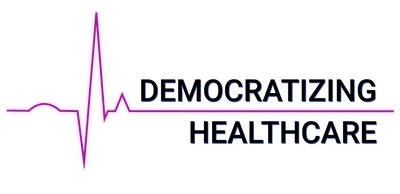About Digital Therapeutics
Digital therapeutics (DTx) and prescription digital therapeutics (PDT) refer to a type of software application that is designed to deliver therapeutic interventions to patients through digital platforms such as smartphones, tablets, or personal computers. Digital therapeutics can be used to treat a wide range of conditions, including chronic diseases, mental health disorders, and addiction.
Both direct-to-consumer and prescription digital therapeutics are generally designed to be used as an adjunct to traditional medical care. They may be prescribed by a healthcare provider or used on a self-guided basis. They can include a variety of different types of interventions, such as cognitive behavioral therapy, mindfulness training, hypnotherapy, and medication management tools.

These high quality software programs have the potential to increase access to care, especially for people who live in underserved areas or who have difficulty accessing traditional healthcare services.

There has been an explosion of new digital therapeutics on the market or in clinical trials in the past few years. Pear Therapeutics cleared the FDA in 2017 for their prescription app that uses cognitive behavior therapy (CBT) for addiction treatment, and CMS (Medicare) created a code for CBT based, prescription digital therapeutics in 2022. These are important milestones in the U.S. healthcare system and opened the door for many other companies since the path to FDA clearance and Medicare coverage has been paved.
Digital Therapeutics Examples
Sidekick Health addresses many different diseases and disorders, including cancer, dermatitis, arthritis, heart failure, high risk maternity, Crohn’s, and ulcerative colitis. The reason they are able to cover such a large number of seemingly unrelated medical problems is because they have a methodology and template of tools that can be used to address the psychological health and well-being for people with a long-term disease.
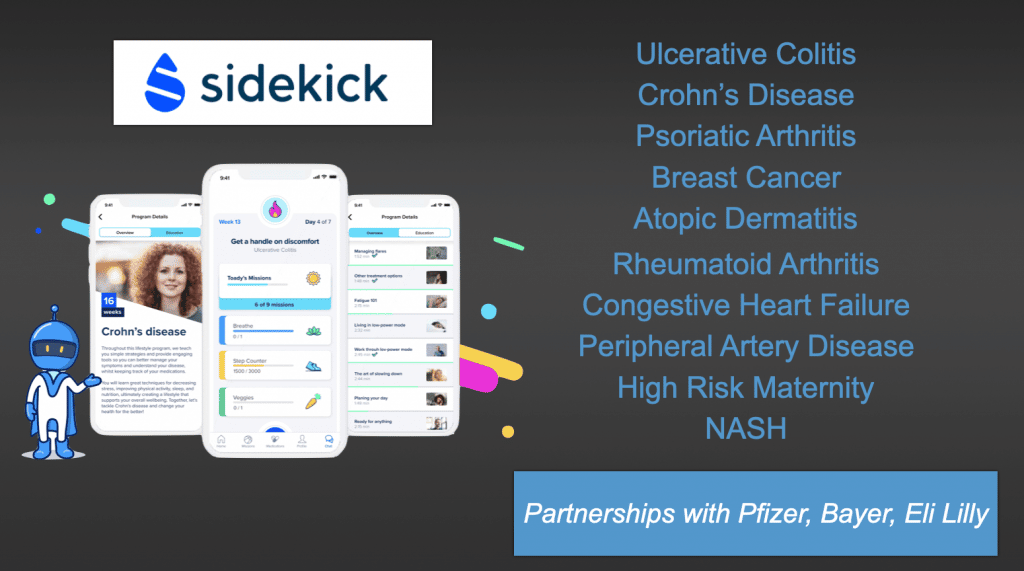
Every disease and condition has a mental and behavioral health component by default. It is stressful to have a disease, and any disease can cause significant anxiety. Most diseases and conditions benefit from exercise, a nutritious diet, good sleep hygiene, and ways to manage pain and fatigue.
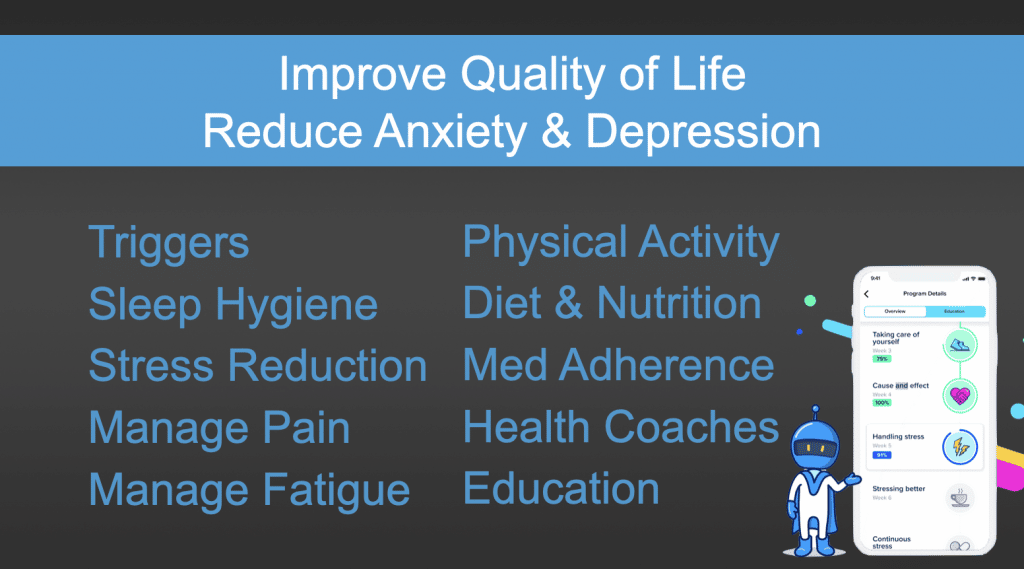
This has led to a proliferation of digital therapeutic platforms that use the same underlying methods, regardless of condition or disease. The methods are to help people improve their quality of life and to reduce anxiety and depression associated with having a condition or disease. These methods include helping people identify and avoid disease or mental health triggers, helping improve their sleep hygiene, reduce stress, manage pain and fatigue, exercise, educate and track diet and nutrition, medication adherence, coaching, and general education about the disease or condition.
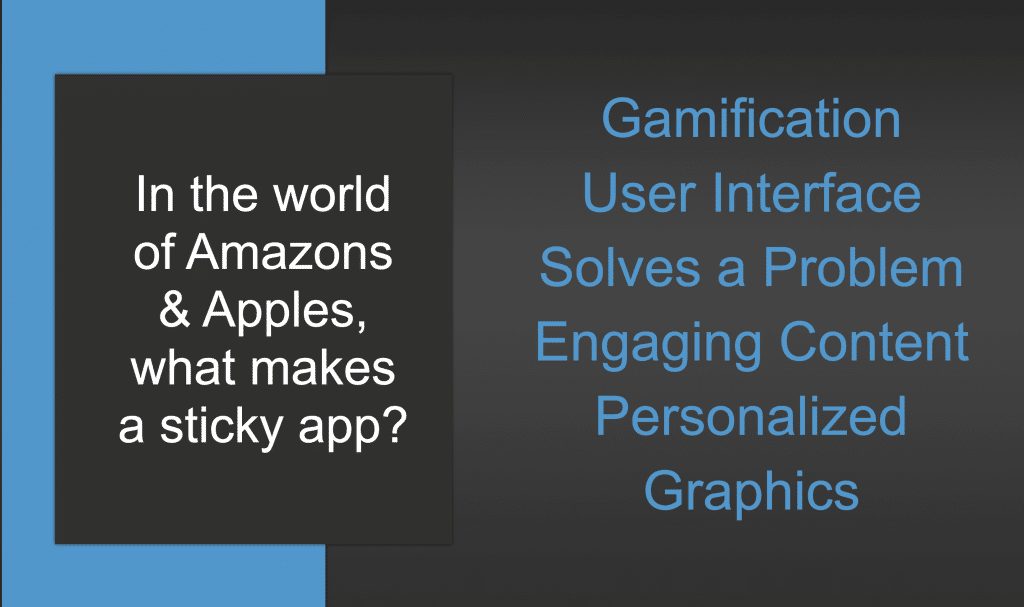
For a comparison in the consumer world, think about Facebook pages for individual diseases and conditions. The user interface, user experience, gamification component, community, graphics, tools, and methods all stay the same across Facebook pages, it’s the content and community members that change based on the disease. These digital therapeutic platforms can be thought of in a similar way, with the digital therapeutics company or pharmaceutical partner developing the content.
Medication Adherence
Medication adherence is a giant issue in healthcare. Many people aren’t compliant with their physician’s recommended medication treatment. However, the reasons for non-compliance can vary from patient to patient. That’s why Twill Health addresses medication adherence from a personalization standpoint. Because the software is based in machine learning, features such as the language, timing, and prompts get personalized to the individual.
Twill covers a lot of diseases and conditions, including high risk maternity for Medicaid recipients.
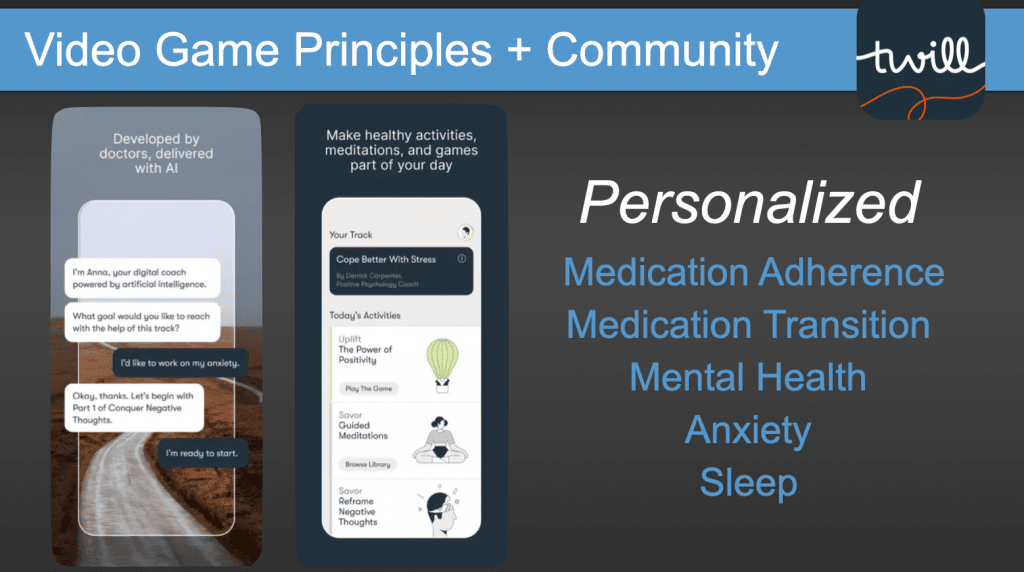
Click Therapeutics is working with multiple pharmaceutical companies. Check out their recent news on expanding their partnership with Boehringer for schizophrenia here.
Click is also working with Otsuka Pharma on a digital therapeutic for major depressive disorder (MDD). Otsuka has a medication for MDD and has pledged $300M in funding that is based on hitting milestones to co-develop and build the digital therapeutic.

Alex Therapeutics has also partnered with Vicore Pharma to address the anxiety associated with having a disease like pulmonary fibrosis.

Resources
The Digital Therapeutics Alliance website
Non-profit that works to advance digital therapeutics
Digital Therapeutics, the Basics by Robin Farmanfarmaian and Michael Ferro
What are Digital Therapeutics?
Pfizer partners with Alex Therapeutics on their smoking cessation app in Germany via Fierce Biotech
Are you working on a new digital therapeutic or have an update? Please email Robin Farmanfarmaian at [email protected] to potentially be included in upcoming articles and keynotes.
